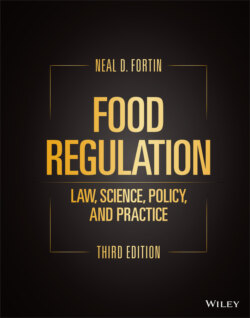Читать книгу Food Regulation - Neal D. Fortin - Страница 144
NOTES
Оглавление1 3.28 Saccharin. In 1977, FDA proposed banning saccharin in food because animal studies indicated it might be a carcinogen and thus prohibited under the Delaney Clause. 42 Fed. Reg. 19996 (Apr. 15, 1977). Congress stopped the ban with enactment of the Saccharin Study and Labeling Act, 91 Stat. 1451 (1977), but which also required any food product that contained saccharin to be labeled, “USE OF THIS PRODUCT MAY BE HAZARDOUS TO YOUR HEALTH. THIS PRODUCT CONTAINS SACCHARIN WHICH HAS BEEN DETERMINED TO CAUSE CANCER IN LABORATORY ANIMALS.” FD&C Act section 403(o). There was also a requirement that the same warning statement be posted in every retail establishment selling food containing saccharin. In 1996, Congress repealed the retail notice requirement. 110 Stat. 882 (1996). In 2000, Congress repealed the labeling requirement. 114 Stat. 2763, 2763A‐73 (Dec. 21, 2000), the “SWEETEST ACT,” the Saccharin Warning Elimination via Environmental Testing Employing Science and Technology Act. This decision was supported by the recommendations of the 9th Report on Carcinogens prepared by the National Toxicology Program and the position of the World Health Organization.
2 3.29 Culture can play an important role in how warnings are applied and how effective they are. For example, the warnings on cigarette packs in Japan illustrate how Japan takes a gentle tone when it warns against smoking: “There is a fear it can damage your health, so let’s be careful not to smoke too much. Let’s obey smoking manners.” Other countries have taken a different tack. In Malaysia, for example, the government found that smokers shrugged off government warnings, so now packages warn that “women smokers have more facial wrinkling than non‐smokers” and warn male smokers that the habit may make them impotent. Lawrence Bartlett, Tobacco: One Million Chinese Deaths Make It Wrong, THE AUSTRALIAN (Aug. 23, 2004).
